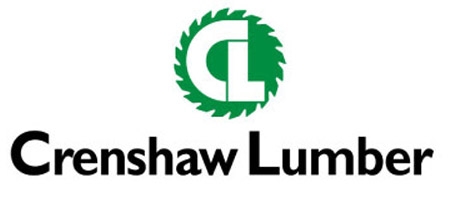
{article.name}
Social Media Links
Remodelers, Use These Ideas to Refresh the ‘Hedgehog’ Business Model
New metrics, benchmarks help you focus on what can make you great
- Share this:
- Share on Facebook
- Pin on Pinterest
- Tweet on Twitter
Jim Collins literally wrote the book on building a successful company. Good to Great, published in 2001, is one of the classic management manifestos, accumulating 25 years of rigorous research to identify 16 concepts that “make great companies tick.”
The “hedgehog” concept is one of the most discussed and difficult to pin down for remodelers. The idea is that great companies are built at the intersection of three circles representing:
- What you can be the best in the world at;
- What drives the economic engine; and
- What are you deeply passionate about?
Thirty years of working exclusively with remodelers has allowed me deep dives into many companies–some of which actually have become great. (See below for my definitions of “great.”) Every one of those few businesses spent years to attain such status; years attempting to answer those three questions. Most didn’t know at the time that’s what they were doing. They were working hard to stay afloat during lean times and to prosper and protect their reputation through equally challenging times of growth.
How to Define “Being the Best”
Let’s start with Circle #1, what you can be best in the world at. Such a goal relates more to multi-national corporations, so let’s change that to “best in your market.”
Remodeling Editor-in-Chief Craig Webb asked me about how limited a hedgehog-like remodeler’s projects should be. “Would that mean you should do kitchens but not bathrooms?” he asked. “K+B but not additions? Whole house renovations but not custom homes? Where are the bright lines in remodeling that qualify you as a smart hedgehog rather than as a silly fox?”
I believe those bright lines can only be found by studying your data and your marketplace. Use the 80/20 rule by studying how key variables—external things like job types, client types, and neighborhoods as well as internal factors like project managers—make a difference in outcomes. Which variables show up in the 20% of jobs that yield 80% of the great outcomes? That’s where you should focus.
A long term client and colleague defined his target market as a two income household with a Volvo in the driveway in a specific zip code needing a major kitchen or family room remodel. He didn’t even look at a tear down custom rebuild in the same neighborhood for a similar client. He knew what he did best and for whom, and he stayed in that market for years! He also knew what he didn’t do well and was never tempted again to deviate from his hard-earned knowledge. He had answered the first question.
As Collins writes, “A Hedgehog Concept is not a goal to be the best, a strategy to be to be the best, an intention to be the best, a plan to be the best. It is an understanding of what you can be the best at. The distinction is absolutely crucial.”
Revving Your Economic EngineAt the Remodelers Summit a few weeks ago, I listened to a great presentation focused on the development of a hedgehog in a remodeling company on defining Circle #2, what drives the economic engine.
This, too, requires lots of analysis to separate what might appear to be a driver from the real driver. For instance, don’t look just at gross profit dollars produced, as that’s the outcome of what you do, not the stimulus. Collins urges finding a single metric that “has the greatest impact” on economic success in your company.
Our presenter currently focuses on gross profit per project manager per month. Other remodelers use gross profit dollars per week, while others use qualified leads per month.
Whatever you pick, keep in mind that this number can change over time: Initially, you might worry about cash flow (as you should), but as the company stabilizes, monthly produced margin (after adjusting for over/under billings) might rise to the top. When the company matures a different economic driver might surface. The point is it takes time to define the best economic driver for current circumstances.
I suggest you find one number that predicts success for the company as it is now and test it over six or nine months. Gross profit per qualified lead per month might be useful, but only if you converted most of those qualified leads into jobs at the right sales price. However, if your marketing doesn’t produce significant numbers of qualified leads the sample wouldn’t produce reliable results.
After reading Simple Numbers, Straight Talk, Big Profits, written by Greg Crabtree and mentioned during the talk I’ve come up with this metric: gross profit divided by total labor dollars. Crabtree says “We have seen that you need to maximize your labor productivity to increase your gross profit.” So it makes sense that highly productive labor – across all departments including sales/marketing and estimating, would produce higher gross profit dollars per field labor dollar. And vice versa as well: inefficient labor will decrease gross profit dollars per field labor dollars. I’ll be testing this across my client base over the next six months.
For example: over a 20-month period a client showed $880,000 of gross profit on $825,000 of non-owner wages ($600,000 of gross field wages and $225,000 of admin/production services) for a $1.07 gross profit per labor dollar. The high was $2.57 and the low 69 cents, so with a range that big it is important to be sure the data is accurate. But from a 30,000-foot perspective it’s a good place to begin.
Whatever number you determine suits your company test and re-test your assumptions. Don’t take my word for it, and don’t take your CPA’s, either. Test it for yourself.
Find Your BlissOn to Circle #3. What are you deeply passionate about?
Many of my long-time clients are approaching retirement, saying they’re worn out by the hard work it takes to maintain a successful remodeling company. They’ve lost their passion. Upon further discussion, they agree that certain parts of the company still excite them: selling a job, for instance, or meeting with new clients, or working on a plan for a new kitchen, or running leadership meetings.Passion is essential in developing a great company because only a deep and abiding interest and curiosity about the work offsets the inevitable ebbs and flows over time. The point is not to develop passion, but to cultivate what you’re already passionate about.
Over the years, I’ve noticed that highly successful remodeling companies tend to reflect the passion of the leaders: one might be known for high-level modern design, another for cozy/comfy family-like relationships with clients and employees, and another for engineer-like control of the production process. This correlation is not coincidental. Work hard to define the kernel of passion that brought you to the business in the first place; then transmit that passion to your employees. Over time you will build a culture which manifests that passion both internally and to the market place – and you’ll have taken care of Circle #3.
Earlier I said the smart hedgehog can build a great company in any market. That’s because the hedgehog is focused on a single idea and not easily distracted, while the silly fox runs in circles because he mistakenly confuses great activity with success. Moral of this story: DON’T BE THE FOX!
First Bonus: Take Jim Collins’ quiz to help you understand where your company sits on its journey to greatness.
Second Bonus: You might ask what a “great: remodeling company looks like. Here are some examples from real companies I have known:
- Net profits of 8% to 13% year over year.
- Earn a profit when annual volume falls by 100% AND when volume increases by 250%. – both of which are difficult to do.
- Potential employees send resumes before a job opening saying “I would so like to work for your company!
- ”Slippage or grippage is always less than 2%, indicating great estimating combined with excellent production.
- Potential clients wait for months to put the company sign on their lawn.
- Willing and able employees successfully purchase the company from the original owners.
- Trade contractors put the company ahead of any other remodelers in the area.
Sign up for our Email List
Stay updated with all our latest posts, products and offers! Just enter your information below.

Comments